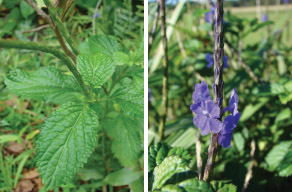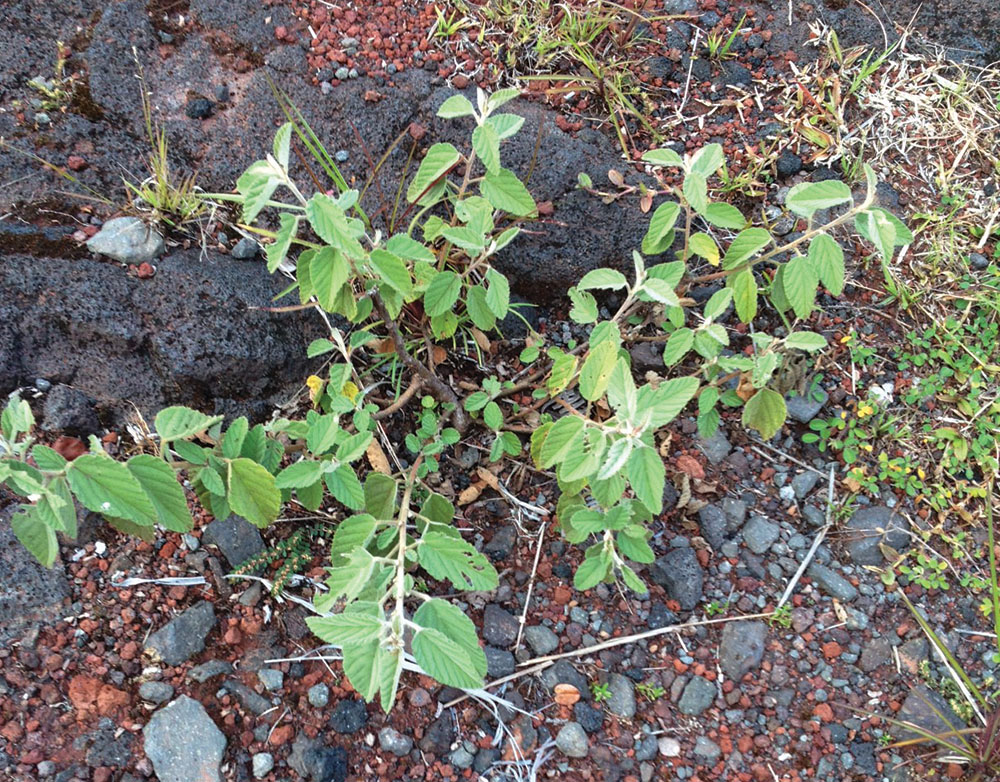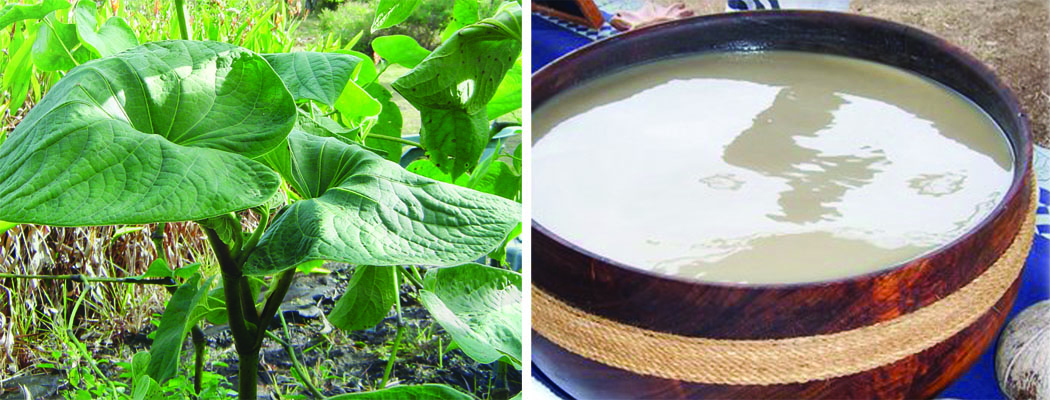
Kava Culture—Facts and Fiction
 By Barbara Fahs
By Barbara Fahs
In Western culture, the herbal supplement Kava Kava, was popular as a sleep aid and anti-anxiety remedy during the late 1990s, until the negative results of a European study were widely publicized. (Some say pharmaceutical companies initiated the campaign.) Liver damage, it claimed, could result from drinking a brew of this traditional Pacific Island beverage that has been used safely for thousands of years.
Even so, kava is served in public “bars” here in Hawai‘i and elsewhere. It is a popular way to relax, without consuming alcohol. The plant called ‘awa in Hawai‘i, and also commonly called kava, is a member of the black pepper family and known in botanical circles as Piper methysticum. The early Polynesian settlers brought ‘awa to Hawai‘i in their canoes because it was so important to them they couldn’t imagine life without it. A tranquilizing beverage was made from the grated, crushed or chewed roots, and we now know that it calms feelings of panic and anxiety. ‘Awa was, and still is, used ceremonially to communicate with the gods and goddesses and to heal numerous ailments, ranging from insomnia to pain relief. No health problems relating to its use have been reported from areas such as Fiji or Hawai‘i, where ‘awa is commonly used. Today, ‘awa root is most often dried, ground into a powder, mixed with tepid water and then consumed by the cupful.
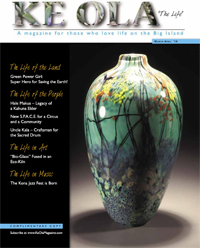
Kumu Dane Kahoe Silva, a Big Island kumu, or teacher, of lomilomi and integrated healing arts and sciences and an ‘awa drinker since 1971, has used the herb to enhance and teach meditation and says it is an important component of dream analysis. He says, “it affects the brain, reducing hyperactivity and inducing clarity, and enables the person using it to achieve a deeper state of meditation.”
Silva uses ‘awa in other forms as well: a salve he makes from the root with oil and beeswax was responsible for taking the pain away from a young man’s broken arm. When the boy arrived at a hospital for treatment, he refused pain medication, saying he had no pain, much to the astonishment of the doctor in charge at the emergency room.
In addition to the unsubstantiated claims of liver damage that were publicized, Silva counters many other commonly-held beliefs about ‘awa, including the opinion that it should not be mixed with anything but room temperature water when making the muddy drink. “Two of my kumu taught me to make a ‘hot soup,’ or decoction, from the fresh root. It’s not a typical soup because it doesn’t have any vegetables, but it makes a potent and delicious beverage that gives you very strong healing effects of the ‘awa. I think people who say cooking it is bad believe that the heat destroys the plant’s mana (spiritual power), which they believe makes it ineffective.” This hot beverage has helped many of his patients to survive high levels of daily stress, he maintains.
The American Botanical Council (ABC) reported in 2007, “No convincing proof of an inherent toxicity of kava exists.” But the herb has been banned since 2002 in many countries, including Canada and Australia, because of the 1999 news from Germany that ‘awa was responsible for causing “severe hepatic adverse effects” in 28 people involved in a German study. ABC went on to state, “This sudden appearance of a potential problem was not backed by traditional experience of kava drinking in the South Pacific, nor with the broad clinical experience with kava products in Europe.”
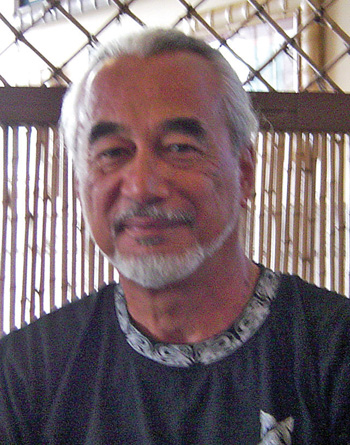
In May of 2009, an Australian study, the Kava Anxiety Depression Spectrum Study, concluded, “a traditional extract of kava… [is] safe and effective for reducing anxiety.” In this placebo-controlled study, PhD candidate Jerome Sarris of the University of Queensland Medical School found that ‘awa was good for treating people with “chronic anxiety and varying levels of depression,” while reducing the side effects and risk of dependency that some pharmaceutical drugs might cause. Sarris hopes that his study will prompt the governments of countries where ‘awa is banned to reconsider their earlier decisions not to allow the herb inside their borders. “Ethanol and acetone extracts, which sometimes use the incorrect parts of the kava, were being sold in Europe. That is not the traditional way of prescribing kava in the Pacific Islands. Our study used a water-soluble extract from the peeled rootstock of a medicinal cultivar of the plant, which is approved by the Therapeutic Goods Administration of Australia,” Sarris explained.
Other beliefs about ‘awa include the opinion that we should not take it in combination with alcohol. “This might create an additional workload on the liver,” Silva said. “But I don’t believe that small quantities of alcohol, like what you get from a tincture, are harmful.” Another erroneous belief is that ‘awa should not be taken in combination with fruit sugars. “No, that is not correct,” he said. “It is often taken with dried fruit or coconut water. If you were to take an alcohol extract of awa with a piece of dried fruit, it would make a tasty and balanced serving of the herb.”
Other preparations Silva has made from ‘awa include capsules he has filled with dried powder and a smoking blend made from the root. He says if you have a toothache and chew on a piece of fresh ‘awa root, your pain will be temporarily relieved, but visit your dentist promptly.
“I have seen the failure and unsustainability of the dominant health care system in the United States over the last 30 years and have also witnessed efforts by the pharmaceutical companies to illegalize many good, natural remedies so they will become richer and more powerful. This is wrong and I continue to work to educate people and allay their fears about using tried and true herbs such as ‘awa.” ❖
The Big Island’s Kava Bars
North side, west side, east side… no matter where you are on the Big Island, you’ll be able to try a taste of traditional ‘awa at a kava bar. “Fights don’t break out at kava bars,” reports The San Francisco Chronicle, which also terms the Big Island “the unofficial kava capital of Hawai‘i. There are probably more kava bars per capita there than anywhere else.” Most bars sell food and some have live music to accentuate your kava experience. Closing time often extends into the wee hours, but you won’t get picked up for a DUI after a visit to one of these bars!
Kanaka Kava
75-5803, space B6, Ali‘i Dr., Kailua-Kona, at the Coconut Grove Marketplace beside the beach volleyball court.
Phone: 327-1660
www.kanakakava.com
Kava Kafe
55-3412 Akoni Pule Hwy., Hawi
Phone: 889-5015
www.kavacafe.com
Bayfront Coffee, Kava & Tea Company
116 Kamehameha Ave., Hilo
Phone: 935-1155
www.organichawaiiankava.com
Uncle’s Awa Bar
In the old town of Kalapana in the rural Puna District where Highway 137 dead-ends into the lava flow.
Sources:
Medical Net News/Australian kava study: http://www.news-medical.net/news/2009/05/12/South-Pacific-drink-Kava-safe-and-effective-in-reducing-anxiety.aspx
Kumu Dane Silva article and video: http://lifesciencefoundation.org/08Ways05.html
American Botanical Council Kava Article: HerbalGram, The Journal of the American Botanical Council; Issue: 73, Page: 44: “Quality Criteria for Kava.”
